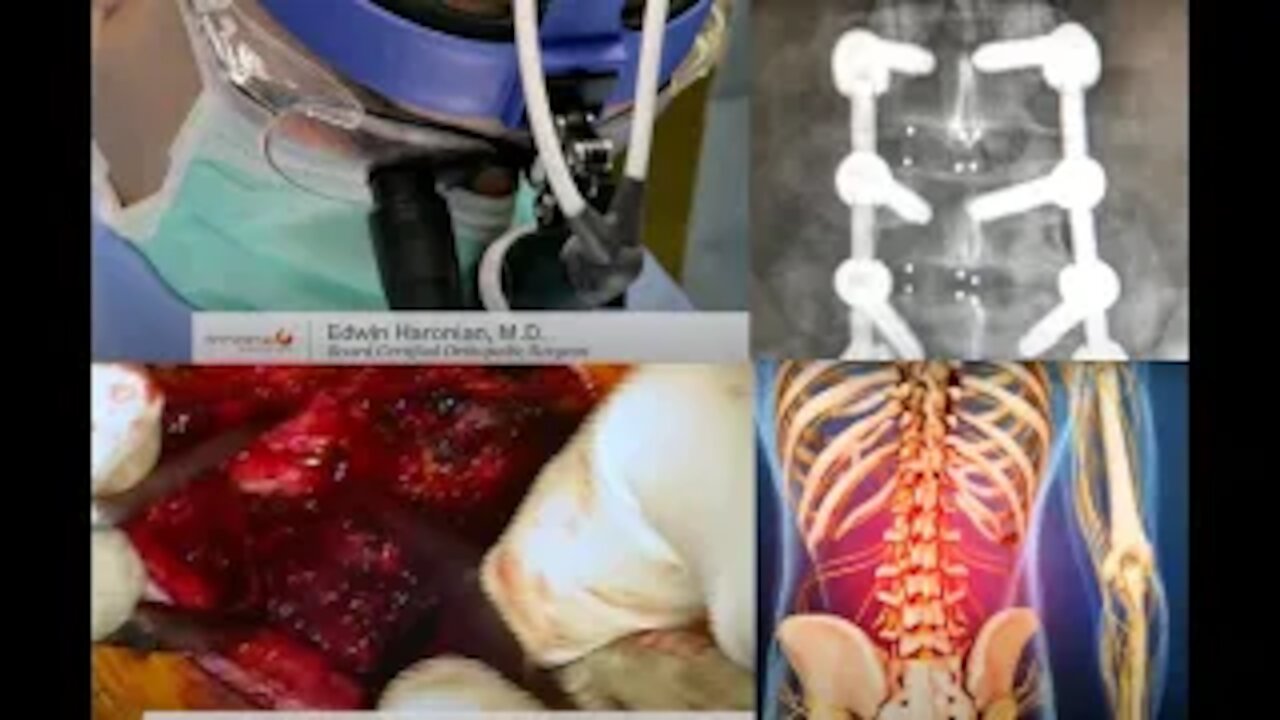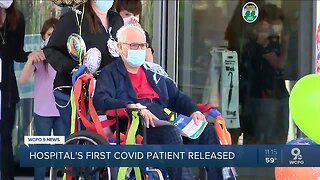Premium Only Content

Our Patient After Placing 8 Screws in His Back
Rodolfo Enciso was involved in a work related injury in 2004. After seeing numerous doctors, who treated him with physical therapy and pain medication, he was finally referred to a spine specialist. Edwin Haronian MD performed a Lumbar fusion surgery on Rodolfo and 2 months after the surgery, Rodolfo is walking and ready to get back to work. We would like to thank Rodolfo for sharing his story with us.
Call us to schedule an appointment: (818) 788-2400
Locations in Pomona, Sherman Oaks, and Los Angeles
About Lumbar Fusion:
A spinal fusion surgery is designed to stop the motion at a painful vertebral segment, which in turn should decrease pain generated from the joint.
There are many approaches to lumbar spinal fusion surgery, and all involve the following process:
Adding bone graft to a segment of the spine
Set up a biological response that causes the bone graft to grow between the two vertebral elements to create a bone fusion
The bone fusion - which results in one fixed bone replacing a mobile joint - stops the motion at that joint segment
For patients with the following conditions, if abnormal and excessive motion at a vertebral segment results in severe pain and inability to function, a lumbar fusion may be considered:
Lumbar Degenerative Disc Disease
Lumbar Spondylolisthesis (isthmic, degenerative, or postlaminectomy spondylolisthesis)
Other conditions that may be treated by a spinal fusion surgery include a weak or unstable spine (caused by infections or tumors), fractures, scoliosis, or deformity.
At each level in the spine, there is a disc space in the front and paired facet joints in the back. Working together, these structures define a motion segment and permit multiple degrees of motion.
Two vertebral segments need to be fused together to stop the motion at one segment, so that an L4-L5 (lumbar segment 4 and lumbar segment 5) spinal fusion is actually a one-level spinal fusion. An L4-L5, L5-S1 fusion is a 2-level fusion.
A spine fusion surgery involves using bone graft to cause two vertebral bodies to grow together into one long bone. Bone graft can be taken from the patient's hip (autograft bone) during the spine fusion surgery, harvested from cadaver bone (allograft bone), or manufactured (synthetic bone graft substitute).
In addition to choices about which/how many levels to fuse and which bone graft to choose, there are many types of spinal fusion, including fusions with surgical approaches from the front (anterior), the back (posterior), both front and back, and/or from the side.
There are several types of spinal fusion surgery options. The most commonly employed surgical techniques include:
Posterolateral gutter fusion - the procedure is done through the back
Posterior lumbar interbody fusion (PLIF) - the procedure is done from the back and includes removing the disc between two vertebrae and inserting bone into the space created between the two vertebral bodies
Anterior lumbar interbody fusion (ALIF) - the procedure is done from the front and includes removing the disc between two vertebrae and inserting bone into the space created between the two vertebral bodies
Anterior/posterior spinal fusion - the procedure is done from the front and the back
Transforaminal lumbar interbody fusion (TLIF) - Similar to the PLIF, this procedure is also done from the back of the spine
Extreme Lateral Interbody Fusion (XLIF) - an interbody fusion in which the approach is from the side
It is important to note that with any type of spine fusion, there is a risk of clinical failure (meaning that the patient's pain does not go away) despite achieving a successful fusion.
Obtaining a successful result from a spine fusion requires a number of factors, including an accurate preoperative diagnosis, a technologically adept surgeon, and a patient with a reasonably healthy lifestyle (non smoker, non obese) who is motivated to pursue rehabilitation and restoration of his or her function.
For more information please visit our website at: http://www.synapsedoctor.com
You can also follow our social media pages at:
http://www.facebook.com/synapsedoctor
http://www.instagram.com/synapsedoctor
http://www.twitter.com/synapsedoctor
-
 0:37
0:37
WXYZ
4 years agoGroesbeck Hwy back open after crash
66 -
 1:37
1:37
KERO
4 years agoCOVID-19 patient released from hospital after almost three-month-long stay
71 -
 0:24
0:24
Newsy
4 years agoParler Back Online After Amazon Suspension
3.78K25 -
 1:51
1:51
WFTS
4 years agoBoy back home after heart transplant
48 -
 1:38
1:38
WFTS
4 years agoFlorida schools back in session after holiday season
12 -
 8:06
8:06
worldsno1CBDa
4 years agoSurgeon Baffled After Chronic Pain Patient Becomes Pain Free
17 -
 2:02
2:02
WCPO
5 years agoCOVID-19 patient released after 7 weeks in the hospital
60 -
 2:28
2:28
WFTX
4 years agoFort Myers High School reviewing safety procedures after hospital patient got inside the building
11 -
 0:18
0:18
ThisWeekWithCars
4 years agoTrans Am Car Coming Back After Spin at Brainerd
30 -
 21:06
21:06
Chocolate Octopus
4 years agoS1Ep13: Getting back on your feet after losing everything
100